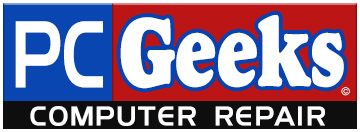Troubleshooting: How To Tell if You Need More RAM
Random Access Memory (or RAM for short) is one of the most important parts of your computer. RAM is the extremely fast memory that is used by your computer to temporarily store data, but how can you tell if you need more of it? Most operating systems today require a minimum of around 2 gigabytes (or GB for short), but unless you perform very light tasks you will often need at least 6GB or even more, with most computers on the market today using around 8GB. With RAM, the more memory you have, the better!

First, you should know how much RAM your machine currently has installed. There are a few ways you can do this, but in Windows the easiest way is by right clicking My Computer and selecting Properties. Here, you can see (in gigabytes) the amount of RAM you currently have installed. You can also find more information on your memory specifications by accessing the Task Manager from the CTRL+ALT+DEL menu and checking the Performance tab. From the Performance tab, click the graph box for “Memory,” and you can view a number of details about the specifications of your currently installed RAM, including the frequency, type (generally DDR3 or DDR4), and form factor of your RAM (DIMM for desktops or SODIMM for laptops).
There are some easy ways to tell during use whether or not you need to upgrade your memory. The most common symptoms are if your computer performance is very slow or unstable, particularly when attempting to access files or programs. Sometimes, when you do not have enough memory, programs become inconsistent and may crash, and videos or video games may “stutter” and play sluggishly. Programs, directories, and internet browsers can take a very long time to load if you are low on memory, especially if you already have multiple programs or browsing windows open to begin with. Furthermore, some internet browsers like Google Chrome and Microsoft Edge can be very memory intensive, sometimes even using 4GB alone or more with numerous tabs open!
To help determine for certain that the issue is RAM and not another hardware or software problem that needs to be addressed, you can check the Task Manager to view some important statistics. In the Task Manager, you can view the programs and processes currently running on your computer. The Task Manager will show you how much each program is using the various resources, with the percentage of how much of each resource is utilized at the top. These resources include CPU usage, network bandwidth, disk usage, GPU usage, and memory. If the total percentage of memory currently used is 80% or higher, it is probably time to upgrade your memory!
Do you need more help troubleshooting your computer problems, or recommendations for upgrades? Do you want your upgrades professionally installed by our qualified technicians? Contact us today at one of our locations!
